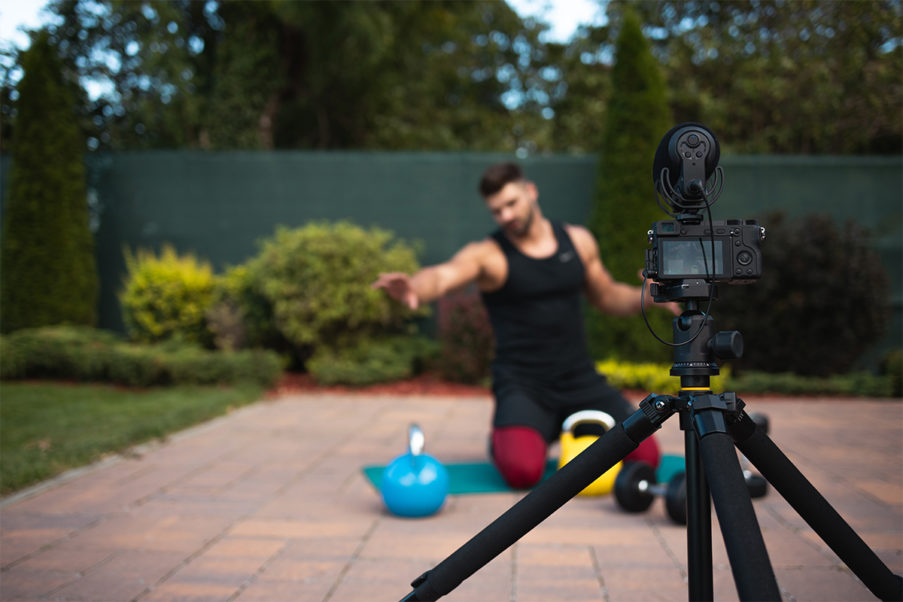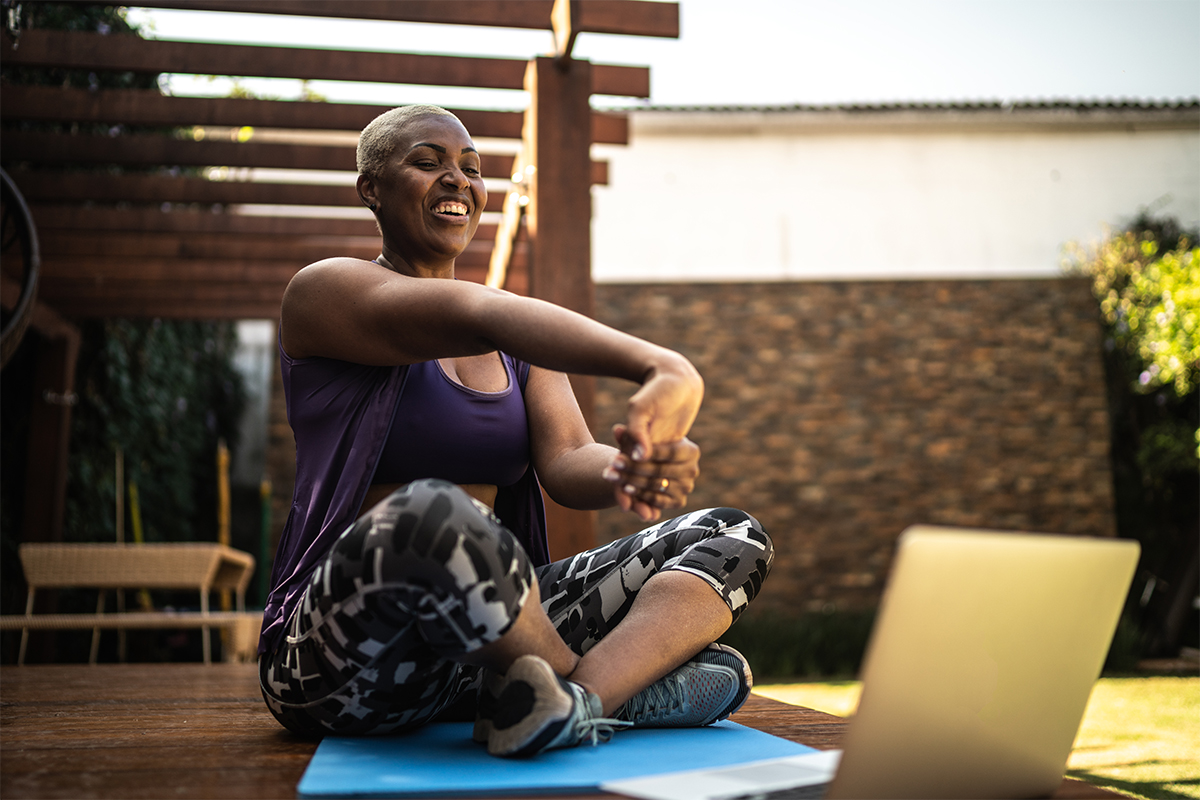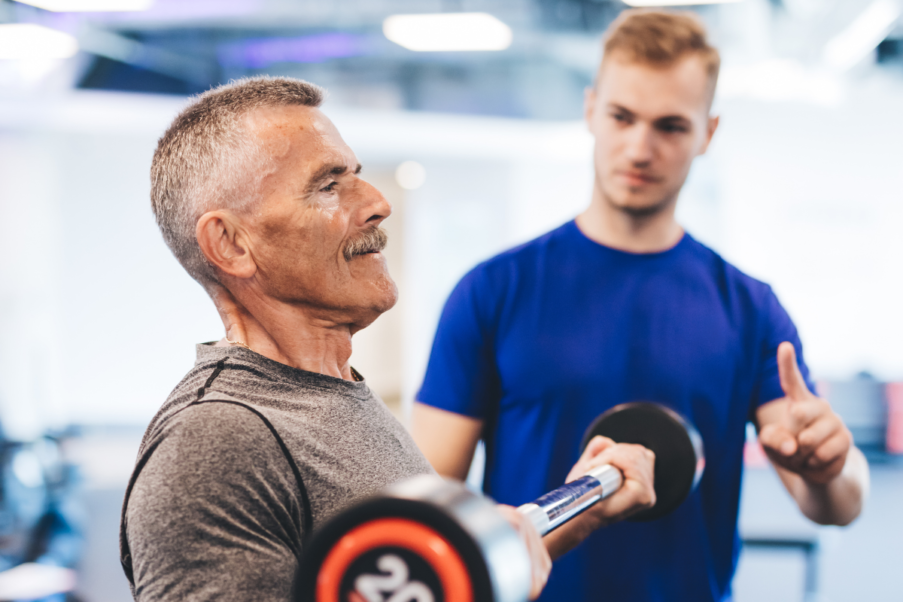Evolution in Pandemic Teaching
Group fitness instructors reveal the lessons, skills and experiences they gained during the pandemic.

Question
How did pandemic teaching change your approach? Did you embrace virtual classes and learn new skills? How have you evolved as a group fitness instructor?
From the Experts
A Greater Purpose
Rebecca Garity Pinto, virtual fitness business strategist and owner of Studio Group X, San Diego.
Pandemic Teaching for Impact
[The pandemic] made me realize that what we do as fitness professionals is so much more than train for physical results. We bring happiness, connection, community and positivity to our members. We help lift their confidence and increase the “feel-good hormone” (dopamine, serotonin, oxytocin and endorphin) levels. Our classes can make their day and have a profound positive impact on their mental health as well.
New Skills and Lessons
I thought virtual fitness would be temporary until gyms reopened, but I found I loved connecting with my members from home so much more! Even though we had been together in person for 10 years, we deepened our connections while meeting up on Zoom.
I also mastered tech. I figured out how to make myself and my class music heard, and I got new lighting. I learned a lot about social media—it’s been the best way to connect with current members and add new ones to my virtual fitness studio.
I helped create community even while each member worked out from home—and now we are even more connected! I learned how to deliver a great experience on Zoom, which can be very different than teaching in person due to the language we use, the way we connect and how we cue. It requires a different skill set in coaching, but after teaching for so many years, learning these new skills reignited my passion for helping people.
Expanding Fitness and Wellness
I’ve taken time to examine the language I use in my classes. While I do still cue and coach good form, I’ve ditched the “cosmetic cues.” I think people are less interested in getting “sexy abs” or being “summer-ready.” Instead, they’re much more interested in how they feel. I love helping people connect to the intrinsic motivation of how they feel completing the rep, mastering the combo and learning a new move. That’s an immediate reward versus waiting for their body composition to change or for the abs that they’ll most likely never get from just working out. I love connecting them to how strong and confident they feel and helping them celebrate the fact that they are taking time out of their busy and demanding days for themselves.
I also love using the discomfort of a workout to help prepare people for life’s uncomfortable tasks. It prepares us for growth inside and outside of the gym. The impact we have as instructors is far-reaching. For example, a woman in my studio is a stroke survivor who has been terrified to drive on the freeway, so she sticks to a small radius near her house. As her son prepares to go to college, she has decided she wants to be able to be there for him and doesn’t want to be dependent on her husband to give her a ride. She is now hiring a driving instructor to help her get on the freeway, and her workouts—getting through those uncomfortable moments—have prepared her to do those bigger, scary things in life. It’s given her the strength and confidence in herself. To me, that is what fitness is all about: We can change lives in so many ways beyond the scale.
See also: 5 Ways Fitness Businesses Have Created Revenue in Pandemic Times
The Benefits of Virtual From Pandemic Teaching

Purnima Aiyar, ACE-certified group fitness instructor, ACE-certified functional movement specialist, and yoga and Zumba® instructor, Bangalore, India.
The pandemic forced me to explore the virtual format as an alternative to physical classes. This is something I had rejected before the pandemic, assuming it would never work, but I was quick to move onto the virtual platform. I’ve been taking virtual classes since the pandemic began and continue to do so. Over time, I’ve learned to better connect with participants by offering virtual talk sessions on weekends where they get to connect with other participants. This helps to make up for the lack of interaction with other participants, or with me, due to working out from their homes
I’ve realized that every situation can be worked out to our advantage when we keep the big picture of helping people move, being active and embracing a healthy lifestyle front of mind, and then find a way to make that happen.
Virtual classes have allowed me to expand my reach, and today I teach students from all over the world. This has added more diversity to my class. Connecting people from different walks of life and professions who have a common goal has expanded everyone’s learning. I do not intend to stop teaching virtually.
See also: Ramping Up Your Virtual Zoom Studio
Learning to Slow Down and Adapt in Pandemic Teaching
Joline Atkins, fitness professional, Beaver, Pennsylvania.
I was teaching a few times a week at a local boutique studio when the pandemic swept through the world in March 2020. I clearly remember teaching my Monday morning class, saying goodbye to my participants, locking the door and thinking, “Surely, we’ll be back in 2 weeks.” Thankfully, my boss was a few steps ahead of me, and by Friday, our studio had done a full pivot to online instruction.
Online is where I’ve remained. This is not because my studio never reopened to in-person instruction—it has and is flourishing—but because the pandemic taught me a valuable lesson about how to best use my time and decrease avoidable chaos in my life. As a freelancer, I was used to changing hats quickly and effectively. The pandemic, however, removed my ability and desire to hop from one responsibility to the next. I asked my boss if I could keep my classes online and she agreed. This removed time spent on commuting and studio responsibilities such as COVID-19 cleaning protocols, which freed me from having to rush home and on to my next gig.
Online fitness instruction is an ideal platform for me. As a former actress, adapting to the camera wasn’t an uncomfortable adjustment. What I did find, however, was that my visual cuing had to be a bit more demonstrative now that I was on a screen the size of a tablet or laptop, rather than in person. And my audio had to be on point. While I never had to use a mic at my small boutique studio, it was nonnegotiable on camera. If I stopped moving or the group couldn’t hear me, I knew they’d hesitate in confusion, and I felt responsible for giving them a great experience without tech disruptions.
My online class schedule expanded when I decided to teach a few more independent classes on my own. I already had a usable space in my basement that I had created for my personal workouts. Over the course of 2020, I slowly improved it by installing a curtain, purchasing lights and an audio mixer, and fashioning a home studio that looked good on camera. Even today, I tweak here and there upon playing back my classes, keeping an eye on how it looks from a screen.
I now teach for the same boutique studio I’ve been with since 2015 and am also an independent curated instructor for a digital platform that got its start during the pandemic. I used 2020–2021 to get certified in Tabata (ACE), STRONG Nation® (Zumba®), Barre and Pumped Up Strength™ (Savvier Fitness), which I teach on the platform.
Believe it or not, while excellence is always on my mind as an instructor, these past 2 years have improved my ability to simply have fun with my classes, relax and banter with them more. We all had to adjust our expectations when lockdowns hit, so offering grace to my participants and myself—if, say, the lighting was off, I forgot to charge my mic or my mind went blank while cuing—became part of the real-life experience of pandemic teaching live. I think this experience has made me a more approachable instructor. I can better focus on my participants now that I don’t have to rush off after class.
I look forward to seeing them every morning—except for Sunday. On Sunday, I sleep!
See also: 21 Best Practices to Help You Survive the New Normal
Sarah Kolvas
Sarah Kolvas is the content manager for IDEA.





